Potato blight explained – plus Monty Don's tips for treatment
Potato blight spoiling your crop? Try Monty Don's expert advice to save your harvest
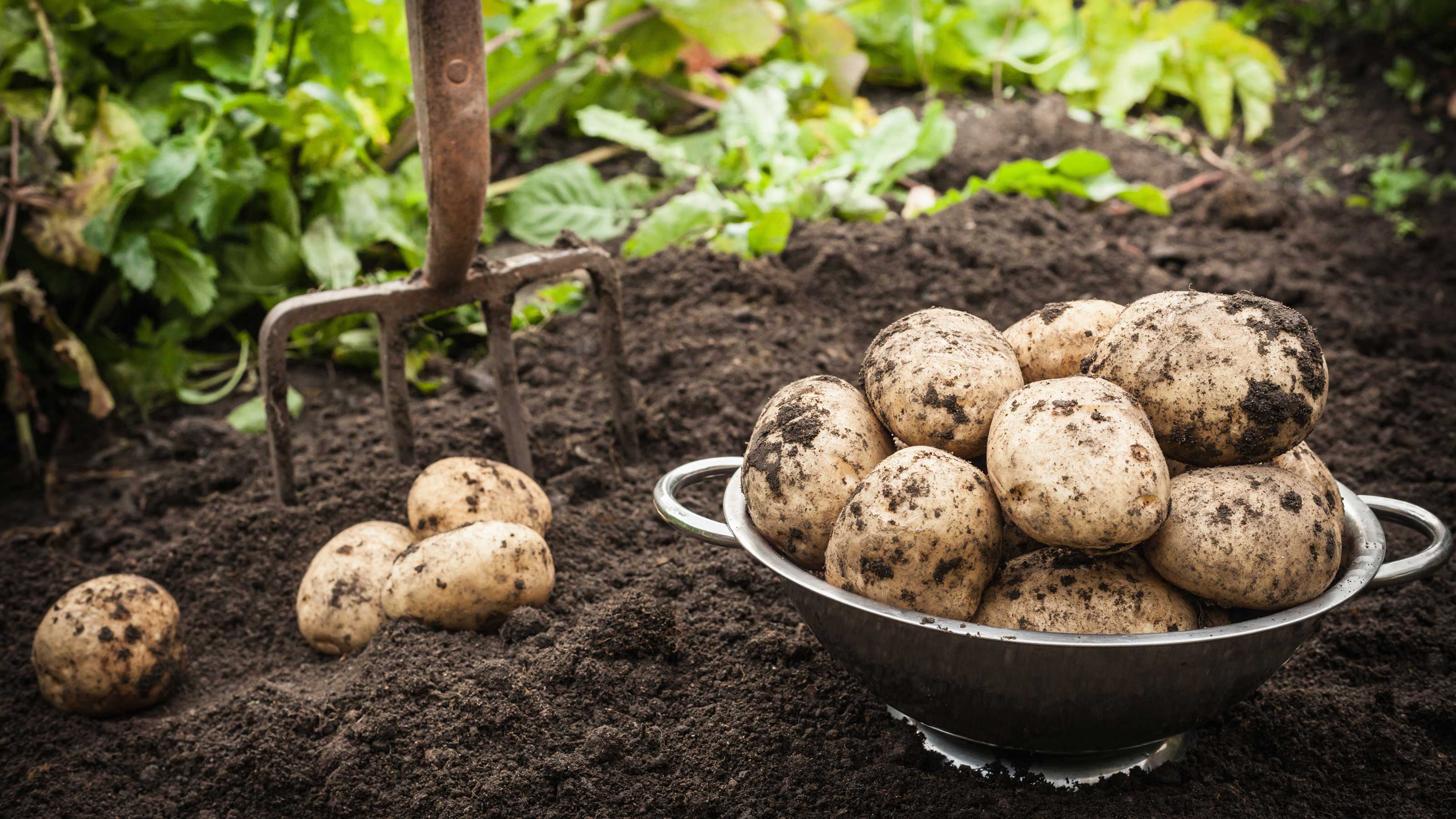

If you're looking for advice on how to prevent potato blight, you've come to the right place. Many grow-your-own aficionados like to include potatoes among the crops they make space for in the garden. There's no surprise to this really, potatoes are easy to cultivate, and it's well worth the investment of time and energy spent growing them for their delicious taste on the plate.
Sadly, though, as you'll know if you've experienced it, one of the potential problems when you're learning how to grow potatoes is the fungal disease potato blight, which can destroy an entire crop in very little time.
Gardening expert Monty Don is among the veggie growers who makes space for potatoes in his plot. He's revealed that he now only grows first early (or 'new') potatoes because of the risk of late blight. And, he's shared more valuable advice on what to do if you discover potato blight – and how you might avoid it in the first place – to ensure you have a successful crop this season.
Potato blight: what is it and how to avoid it
Monty Don gave his expert advice on dealing with potato blight on his website. We're sharing his top tips below, along with some advice of our own.
What is potato blight?
Monty explains that potato blight is a fungal disease. It first rots what are called the haulms, which are the stems. Then, because it is washed into the soil by the rain, it does the same to the tubers. The result? Potatoes that are unstorable if not inedible, Monty says.
When the temperature is high and the air humid for 23 hours, the fungi develop very fast, Monty explains, and these are conditions that are increasingly frequent in the height of summer.
It's not just potatoes – late blight can affect your crops if you've learnt how to grow tomatoes, too, which will quickly begin to decay if infected.
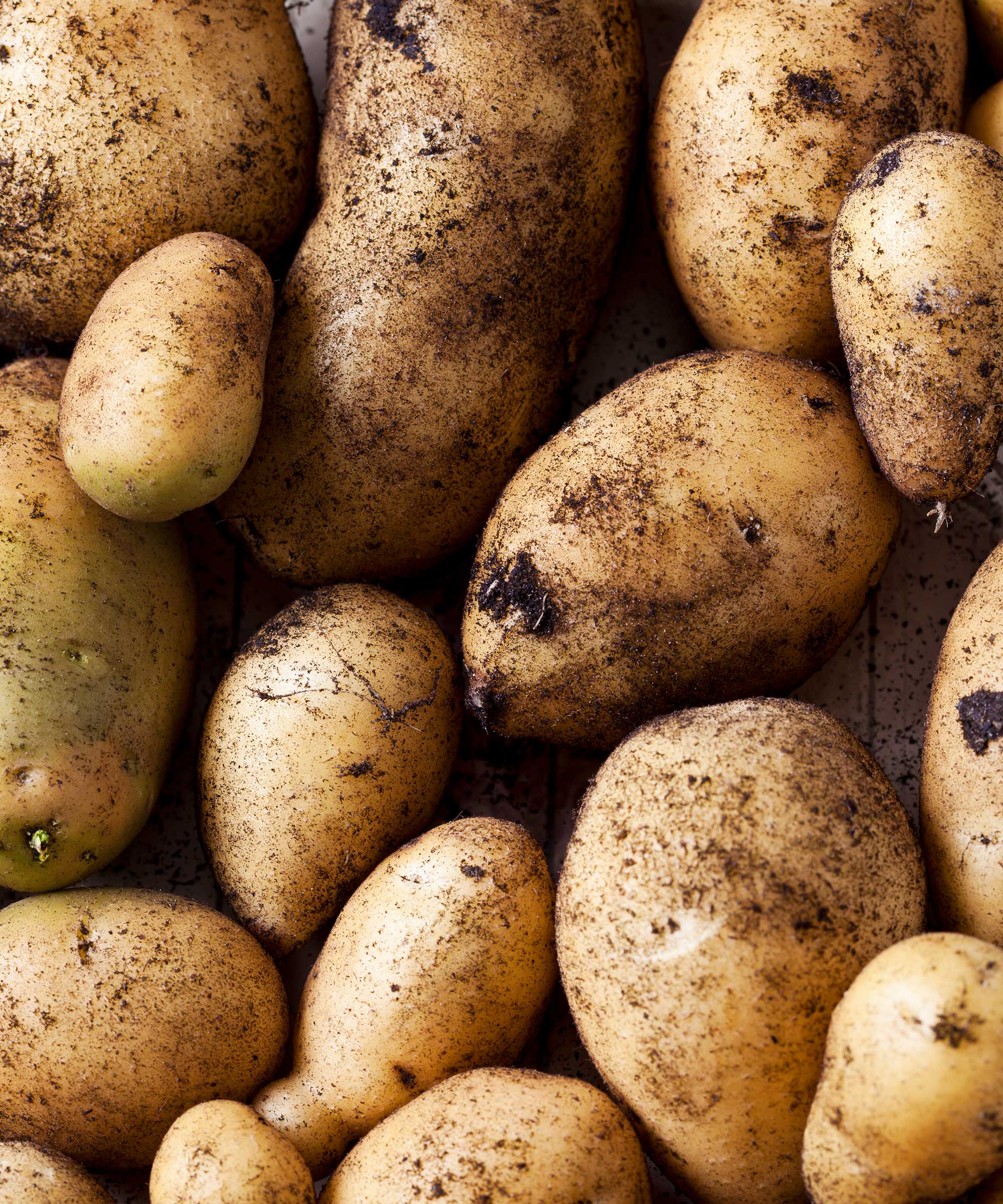
Blight can spoil your entire potato harvest, so try to catch it early
How can you spot potato blight?
So, how will you know if your potatoes are suffering from blight? You can spot it because the plants' leaves will have chocolate-colored circular areas. These quickly spread and collapse the foliage, Monty says.
Once the blight has worked its way down into the tubers, it'll cause patches of reddish-brown decay, which will soften over time as the potatoes rot – certainly not appetizing.
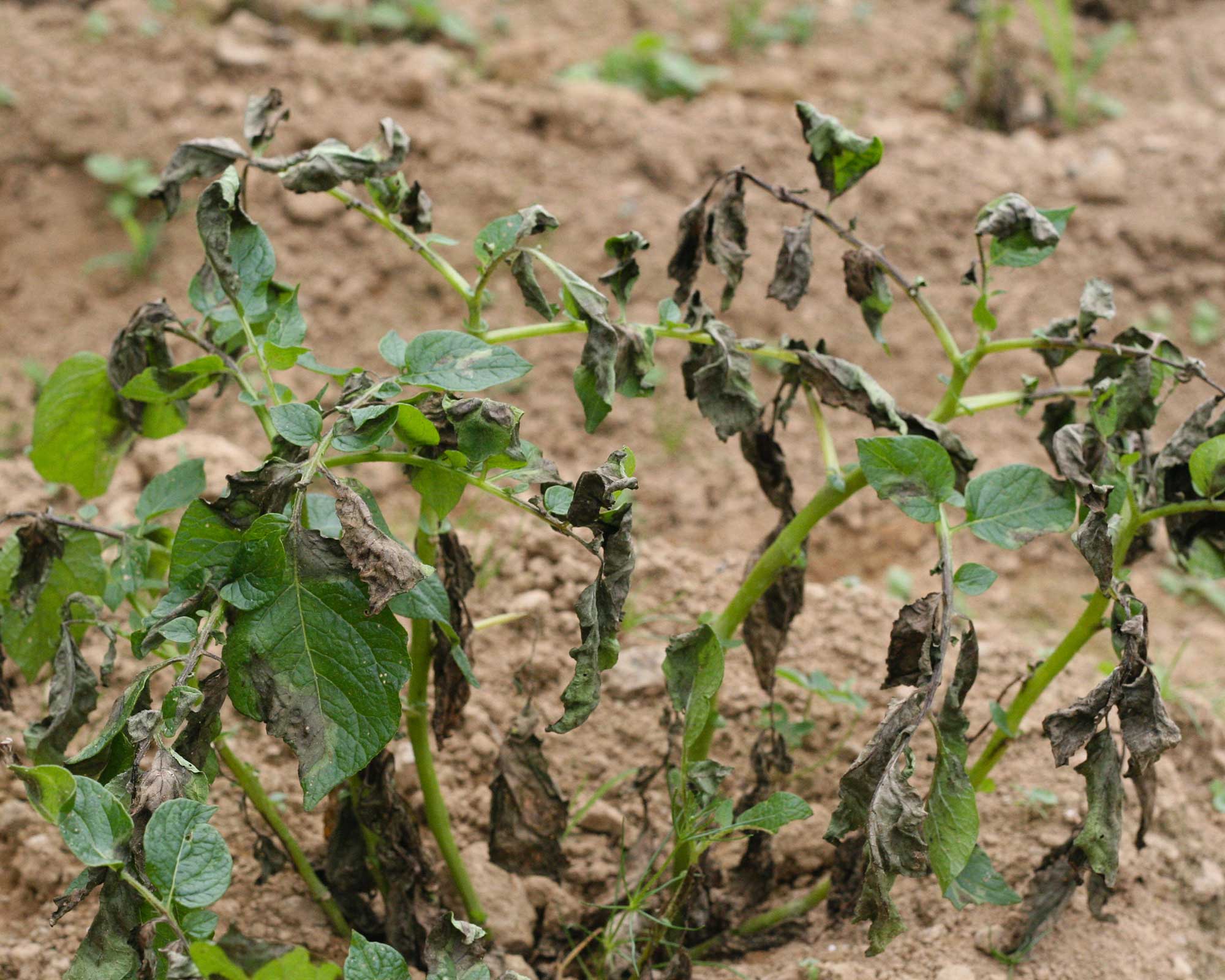
Withered leaves with patches of brown are a telltale sign of blight
What should you do if you spot potato blight?
Fortunately, it is possible to save a crop of potatoes from the ravages of potato blight. What's required is to remove the affected foliage straightaway when you see the marks, Monty says. Our best secateurs will come in handy here, just be sure to clean them after use.
Make sure you remove it all, advises Monty, but he says you can still compost the foliage as the fungi won't survive the process.
Also important is to make sure a good layer of soil covers the tubers, Monty says. After that, wait for a dry day, then harvest your potato crop, he adds.
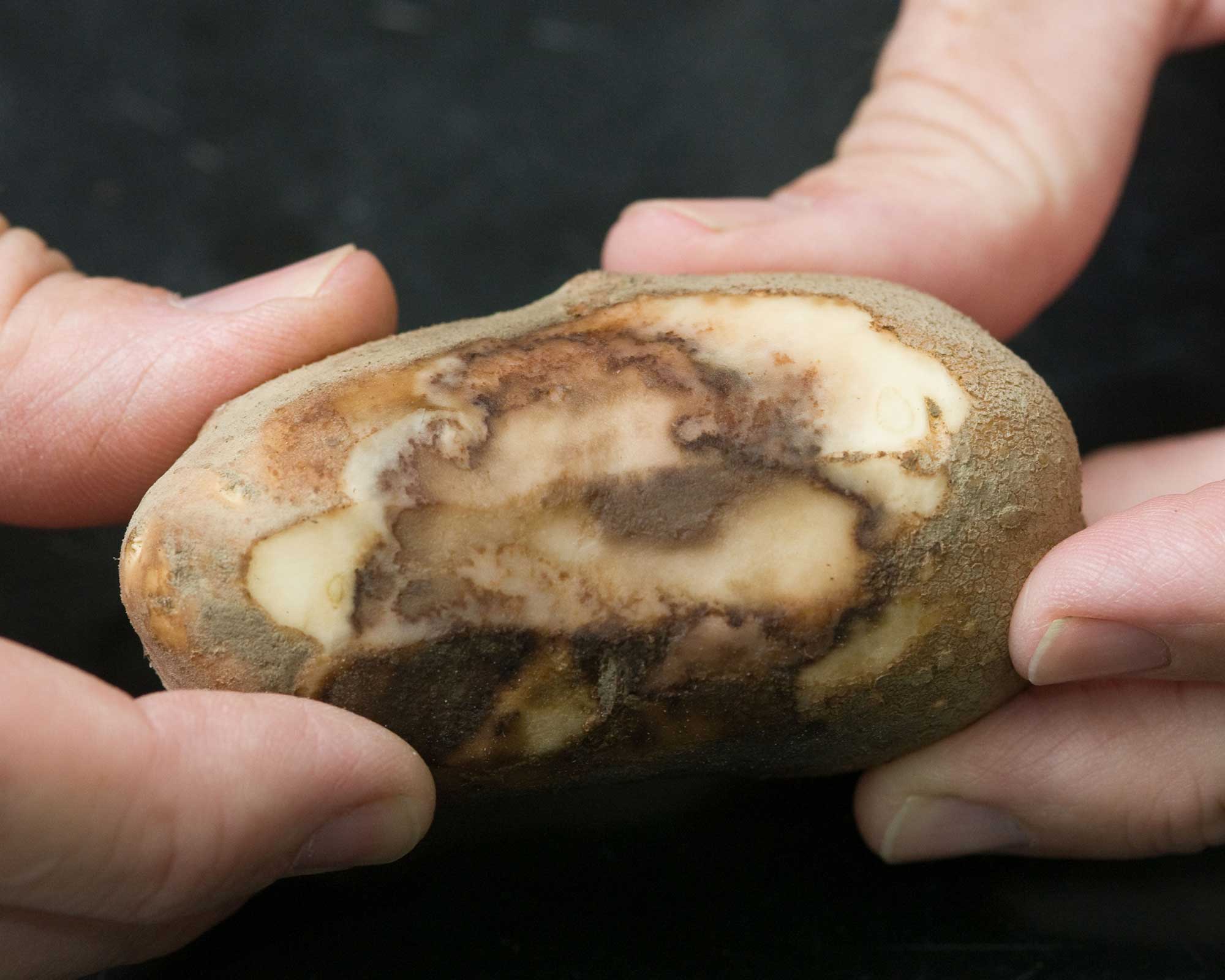
A potato infected with blight
What potato varieties get affected by blight?
Maincrop potatoes are the most likely type to be affected by blight. The potato varieties that are less likely to be affected are first and second earlies, Monty says. That's because these 'new' potatoes mature more quickly and are ready to be harvested earlier in the growing season.
Monty grows only first earlies now – and harvests them on his 8 July birthday, he disclosed – to reduce the risk of blight.
You could adopt the same strategy as Monty. But, if you don't want to miss out on the opportunity to grow the maincrop potatoes (the ones that take longer to mature and are harvested from August to September), opt for a blight-resistant variety to reduce your risk. Here are three to try:
- 'Sárpo Mira' provides a good yield of large, floury, reddish-pink-skinned potatoes which also happen to be resistant to slugs.
- 'Cara' offers huge yields of smooth, pink-and-white-skinned potatoes that are good for baking and boiling.
- 'Valor' – a white-skinned late maincrop. These potatoes have slightly waxy flesh and are suitable for all kinds of cooking methods.
Looking for more easy crops to grow in your veg patch? You can find our favorite picks in our guide to the best vegetables to grow in raised beds.
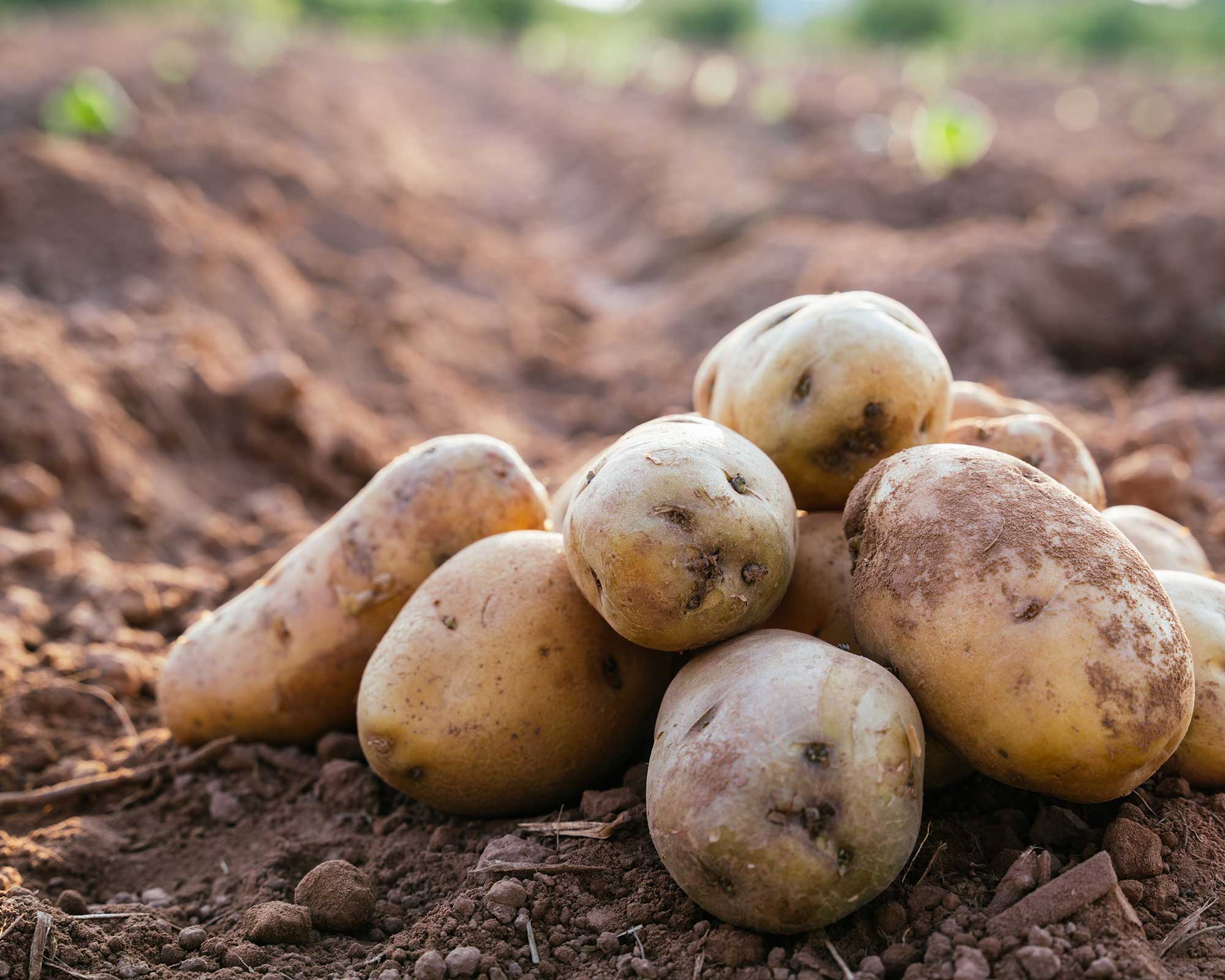
There are plenty of tips you can try to prevent potato blight
How can you reduce the risk of potato blight?
There are other tactics you can use to lower the chances of your potato crop suffering from blight.
- Avoid growing potatoes in the same soil year on year. Instead, rotate the crops in your raised garden bed ideas.
- Make sure the spot you choose for your potatoes has good airflow, and don't crowd plants together. This means that foliage can dry easily after rain.
- Additionally, when you're watering, target the base of the plant only and water in the mornings so moisture can evaporate during the day. You can find more tips on watering plants in our guide.
- When it comes to harvest-time, it's also important to dig up all the potatoes in the soil. Destroy any leftovers before the following spring, as suggests the RHS.
Bear in mind that the potato blight Monty Don takes steps to avoid is late blight. It's different from early blight, which is also common in US gardens, and caused by fungus Alternaria solani.
So how do you prevent early blight affecting your kitchen garden ideas? Good air circulation around plants and watering as above are important in helping to control it, as is practicing crop rotation.

Sarah is a freelance journalist and editor writing for websites, national newspapers, and magazines. She’s spent most of her journalistic career specialising in homes and gardens and loves investigating the benefits, costs and practicalities of home improvement. It's no big surprise that she likes to put what she writes about into practice, and is a serial house revamper.
